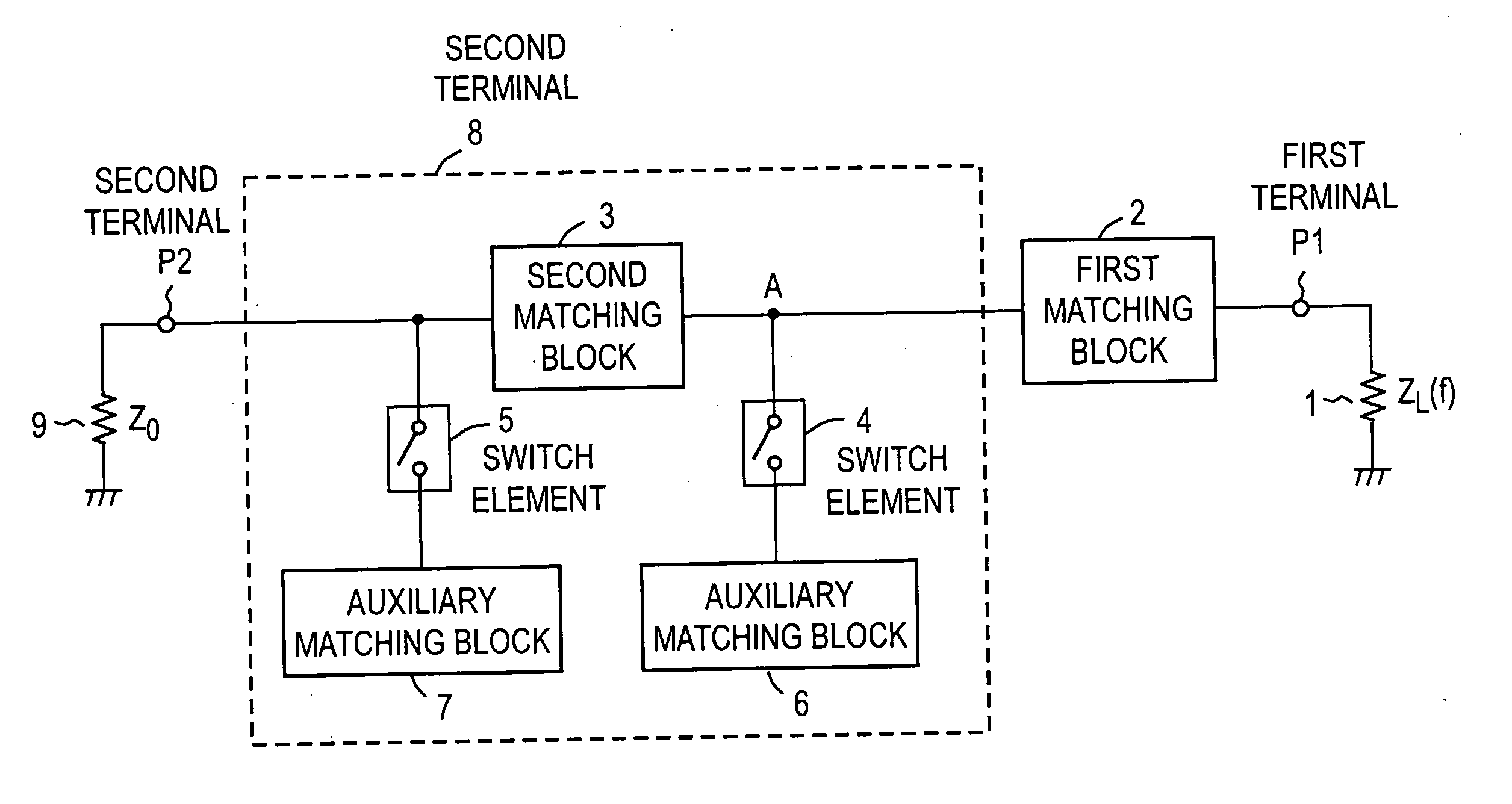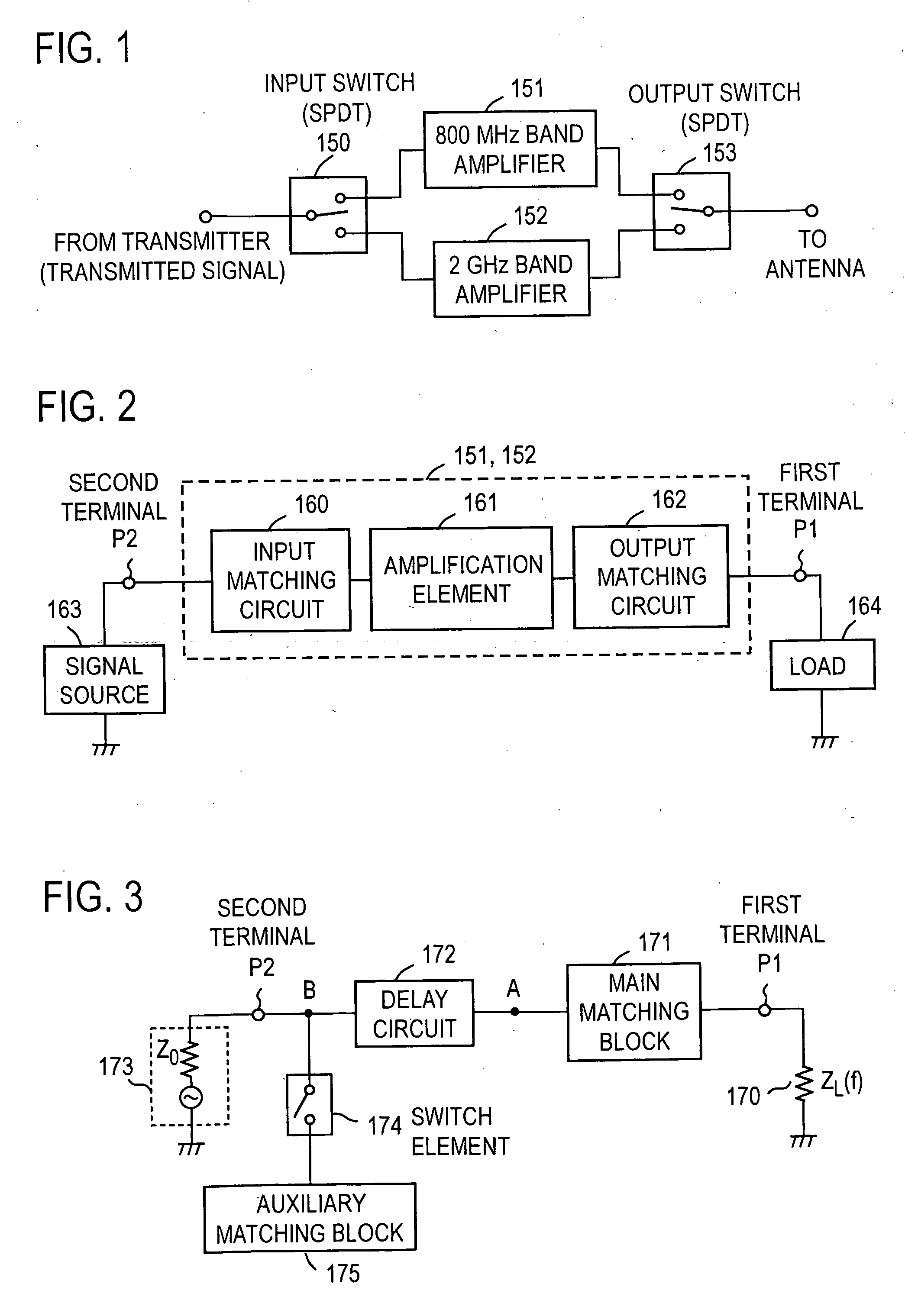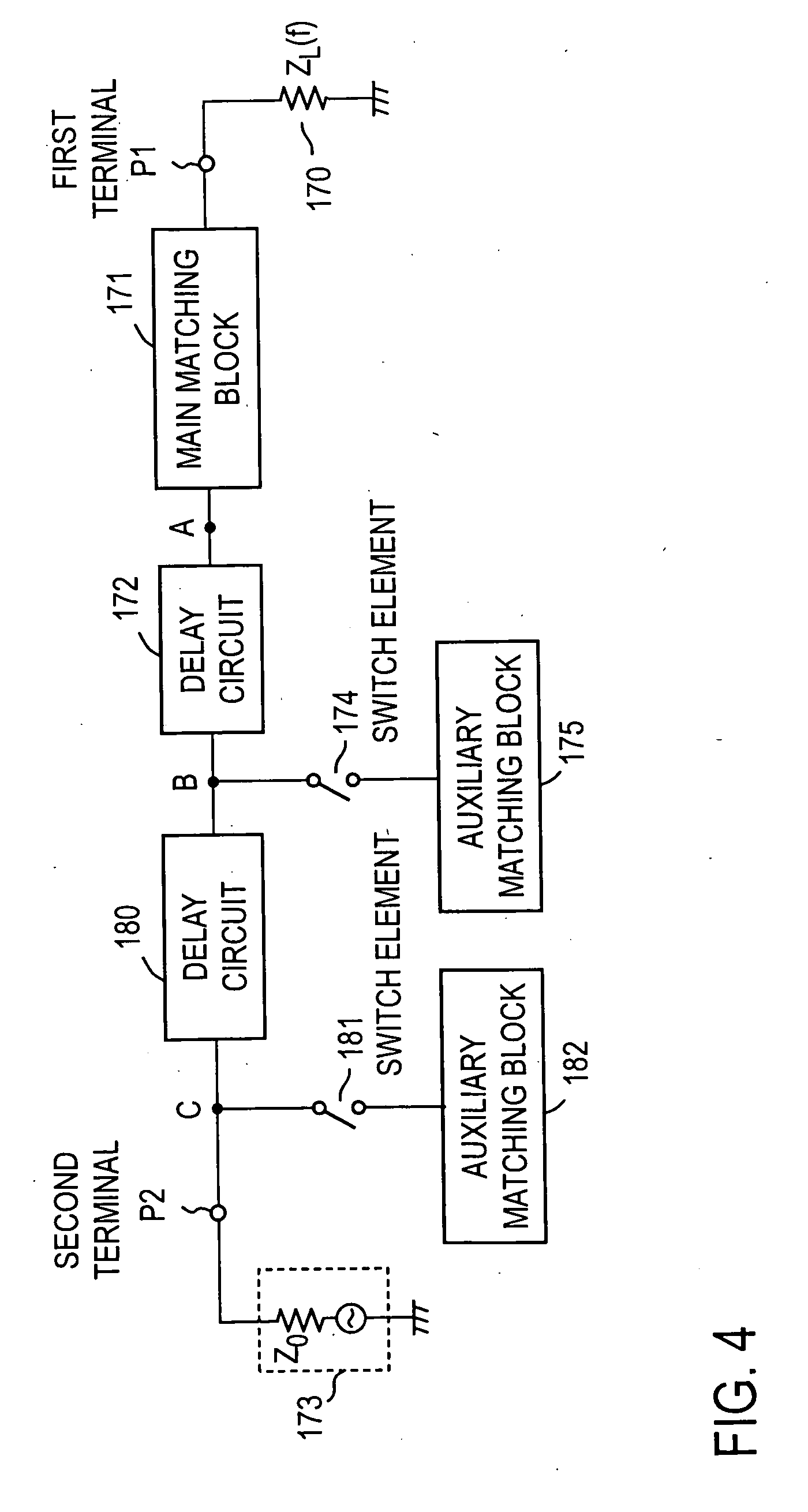Matching circuit
a matching circuit and circuit technology, applied in the field of matching circuits, can solve the problems of reducing gain and efficiency, increasing the total circuit area of the transmitter, and comparatively large components of transmission lines, and achieve the effect of small siz
- Summary
- Abstract
- Description
- Claims
- Application Information
AI Technical Summary
Benefits of technology
Problems solved by technology
Method used
Image
Examples
embodiment 1
[0039] In FIG. 5, the basic configuration of a matching circuit of the present invention is shown. The matching circuit of the present invention is constituted by a first matching block 2 and a matching circuit part 8 consisting of lumped elements. Matching circuit part 8 is a π-type circuit constituted by a second matching block 3, switch elements 4 and 5, and auxiliary matching blocks 6 and 7. One end of first matching block 2 is connected to a first terminal P1 to which an element 1 (a load in this example) having an impedance ZL(f) with frequency-dependent characteristics is connected. To the other end of first matching block 2, one end of second matching block 3 is connected in series. The other end of second matching block 3 is connected, via a second terminal P2, to an element 9, e.g. a signal source, with an impedance Z0 whose impedance does not depend on the frequency. Also, to the terminal on the first matching block 2 side of second matching block 3, there is connected a ...
embodiment 2
[0045]FIG. 8 is an example where the basic structure of this invention, shown in FIG. 5, has been generalized so that it can be adapted to a plurality of frequency bands. This matching circuit is composed of first matching block 2, L-type blocks 43a to 43n, and shunt circuit blocks 46a to 46n. Each L-type block 43i (i=a to n) is composed of a second matching block 40i, a first switch element 41i, and a first auxiliary matching block 42i. One terminal of second matching block 40a is connected to first matching block 2. Also, the other end of second matching block 40a is connected to one terminal of second matching block 40b. In this way, each second matching block 40i is connected in series. First auxiliary matching block 42i is connected, via first switch element 41i, to the terminal of second matching block 40i on the side of first terminal P1. In other words, an L-type circuit is formed by means of second matching block 40i, first switch element 41i, and first auxiliary matching b...
embodiment 3
[0056] A matching circuit generalized by using π-type circuits was explained in FIG. 8, but it is also possible to configure a generalized matching circuit using T-type circuits. In FIG. 10, there is shown an embodiment of a matching circuit using two T-type circuits. This matching circuit is composed of first matching block 2, an L-type block part 63a, an L-type block part 63b, and a second matching block 60c. One end of first matching block 2 is connected to a first terminal P1 at which it is connected to element 1. Also, the other end of first matching block 2 is connected to one end of a second matching block 60a inside L-type block part 63a. To the other end of second matching block 60a, there is connected an auxiliary matching block 62a via a first switch element 61a. Moreover, the other end of second matching block 60a is also connected to one end of a second matching block 60b inside L-type block part 63b. To the other end of second matching block 60b, an auxiliary matching ...
PUM
 Login to View More
Login to View More Abstract
Description
Claims
Application Information
 Login to View More
Login to View More - R&D
- Intellectual Property
- Life Sciences
- Materials
- Tech Scout
- Unparalleled Data Quality
- Higher Quality Content
- 60% Fewer Hallucinations
Browse by: Latest US Patents, China's latest patents, Technical Efficacy Thesaurus, Application Domain, Technology Topic, Popular Technical Reports.
© 2025 PatSnap. All rights reserved.Legal|Privacy policy|Modern Slavery Act Transparency Statement|Sitemap|About US| Contact US: help@patsnap.com



